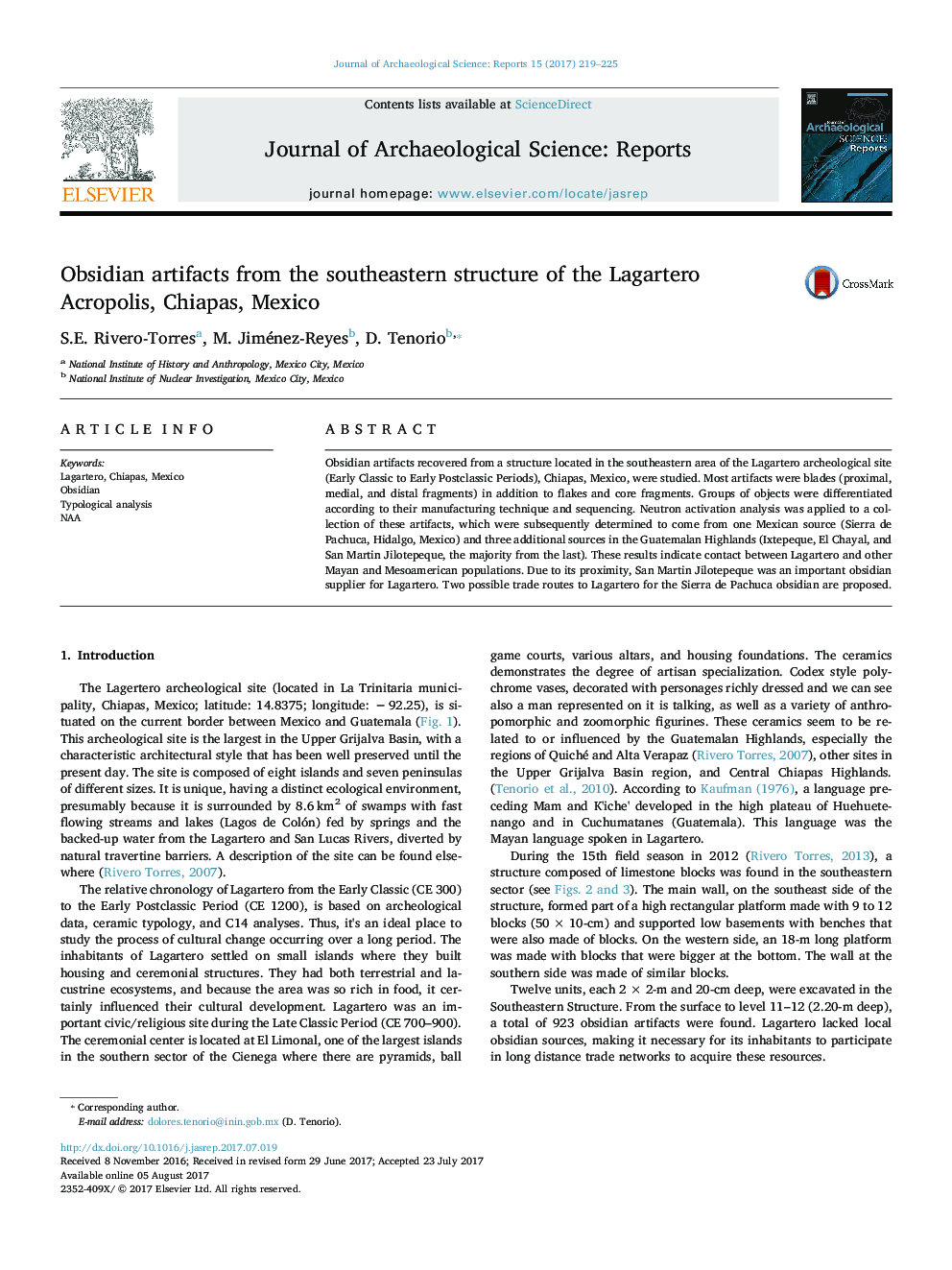| Article ID | Journal | Published Year | Pages | File Type |
|---|---|---|---|---|
| 5112288 | Journal of Archaeological Science: Reports | 2017 | 7 Pages |
Abstract
Obsidian artifacts recovered from a structure located in the southeastern area of the Lagartero archeological site (Early Classic to Early Postclassic Periods), Chiapas, Mexico, were studied. Most artifacts were blades (proximal, medial, and distal fragments) in addition to flakes and core fragments. Groups of objects were differentiated according to their manufacturing technique and sequencing. Neutron activation analysis was applied to a collection of these artifacts, which were subsequently determined to come from one Mexican source (Sierra de Pachuca, Hidalgo, Mexico) and three additional sources in the Guatemalan Highlands (Ixtepeque, El Chayal, and San Martin Jilotepeque, the majority from the last). These results indicate contact between Lagartero and other Mayan and Mesoamerican populations. Due to its proximity, San Martin Jilotepeque was an important obsidian supplier for Lagartero. Two possible trade routes to Lagartero for the Sierra de Pachuca obsidian are proposed.
Related Topics
Social Sciences and Humanities
Arts and Humanities
History
Authors
S.E. Rivero-Torres, M. Jiménez-Reyes, D. Tenorio,
